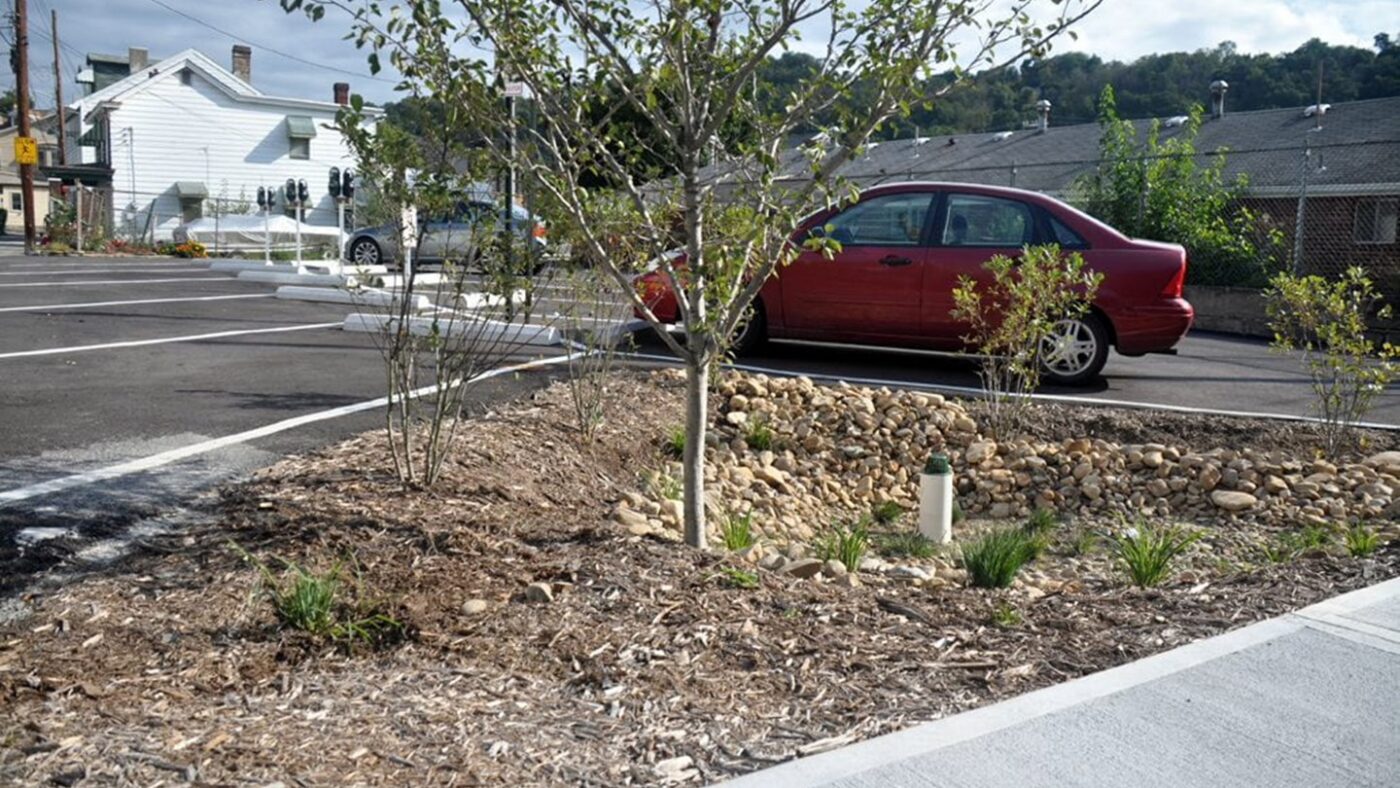Runoff Landscaping for Parking Lots
There are many advantages to introducing smart landscaping into parking lot planning and design, including minimizing flooding, maintaining cleanliness, and creating green space. Smart landscaping creatively and effectively implements plantings in a way that meets the functionality requirements of a parking lot while incorporating environmental efficiencies.

The most important function of parking lot landscaping is to provide natural drainage, a water collection network, and stormwater filtration. Landscaping can also enhance the aesthetic quality of the space and help reduce temperatures in the summer by providing shade. Care should be taken when choosing the type of tree used in a parking lot to ensure that it does not drip sap on cars or drop heavy fruit.
Bioretention is an efficient technique to catch and treat parking lot runoff. Landscape islands are best when installed below the parking lot level so they can collect water runoff. Usually, bioretention landscape elements are filled with a sandy, compost-rich soil mix, topped with a layer of mulch and a dense vegetative cover. This allows stormwater to be absorbed into the soil, where it is filtered and absorbed into the groundwater. The water is cleaned by the soil’s microbial action.
To avoid flooding during heavy storms, bioretention areas incorporate a ‘pond’ about 6 to 8 inches deep with an overflow outlet to drain the water. For a bioretention area to be effective, it should cover 5% of the entire paved surface.
Bioswales
Even small lots can be designed with a variation of this technique by using perimeter bioswales, which are depressions along the perimeter designed to remove silt and pollution from surface runoff water, distribute the water away from some locations toward a larger collection system, and minimize flooding. Parking lots should be designed so that water is directed toward the perimeter. Bioswales are effective landscaping techniques that can be incorporated into many types of vegetation.
Rain Gardens and Designed Wetlands
Rain gardens, deep perimeter strips, and designed wetlands are other types of bioretention landscape elements that receive excess runoff that bioswales cannot support. They are the final elements in the stormwater runoff network system.
